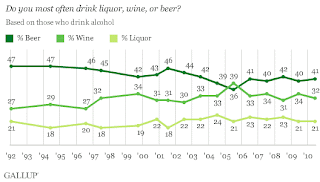In
Guyana, beer is a highly consumed beverage. In areas like Bartica 6 out of 20 persons
begin consuming beer by the age of 14. In other parts of the country one in
every 30 persons begins to consume beer by age 16. Even though the legal
drinking age is 18, beer is an easily accessible commodity and is available to
anyone at social events. In fact, research conducted by The National
Institute on Alcohol Abuse and Alcoholism [NIAAA] in the United States of
America show
that the serious drinking problems (including what is called alcoholism) typically
associated with middle age actually begin to appear much earlier during
adolescence. Some
parents allow their under ages children to consume beers in their presence. Some
people also drink and promote beer consumption for a living.
“I consume about ten to fifteen beers in one night when I’m on duty. Being a spokes person for Carib beer I have no other alternative. However I only consume beer when I am on the job or at a social event. Sometimes when I’m hanging with friends I opt for a non alcoholic drink just because I know I consume it when I’m working.” Annelise Edwards (Carib Model in Guyana).
A general study on beer drinkers
in Guyana has not been conducted but beer remains the preferred beverage of
choice among Americans who drink alcohol, as it has every year since 1992 --
with the exception of 2005, when wine edged into the top spot.
Most beers in Guyana are sold at low prices. Banks Beer, which is brewed in Guyana, is generally retailed for $300 each. Their main competitor, Carib Langer, is retailed for $240. Other beers sold in Guyana are the Stag Beer, Banks President’s Beer, Corona Beer and the Heineken Beer.
Most beers in Guyana are sold at low prices. Banks Beer, which is brewed in Guyana, is generally retailed for $300 each. Their main competitor, Carib Langer, is retailed for $240. Other beers sold in Guyana are the Stag Beer, Banks President’s Beer, Corona Beer and the Heineken Beer.





